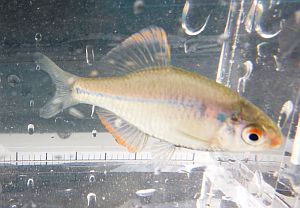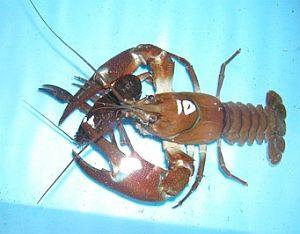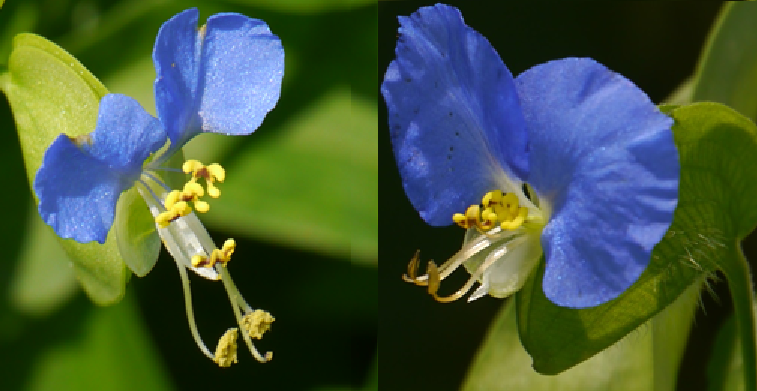Applied Ecology
Staff
Research Topics
We are conducting field and laboratory studies on Applied Ecology to conserve native species and to clarify maintenance mechanisms of biodiversity.
Study on conservation ecology of endangered freshwater animal species
|
Many native species of freshwater animals are endangered due to factors such as the negative effects of river or agricultural channel improvements and predation or competitive exclusion by invasive species. To conserve such endangered native freshwater animals, we have to clarify the basic ecology (e.g., reproductive behavior and habitat preference) and then develop effective conservation methods. In our recent studies, we clarified the habitat preference of the endangered bitterling fish species (Rhodeus atremius suigensis ; Fig. 1) in agricultural channels, and wintering site environment of the endangered Nagoya Daruma Pond Frog (Pelophylax porosus brevipodus) inhabiting paddy fields. Also, we have studied the effectiveness of restoration methods in agricultural channels for freshwater fish conservation. |
 (R. atremius suigensis). |
Study on ecology of invasive crayfish species and development of effective eradication methods
|
Invasive freshwater animal species have a negative impact on native species. Especially, the impact of invasive crayfish is strong. In our previous studies, the invasive North American crayfish species (Pacifastacus leniusculus) was shown to be able to cause species replacement for the endangered native Japanese crayfish species (Cambaroides japonicus) due to direct predation (Fig. 2) or in competition for preferred sized shelters. In the present study, we have tried to clarify the life cycle of the North American invasive crayfish species Procambarus clarkii inhabiting water areas in Japan and also to develop effective eradication methods. |
 |
Coexistence mechanisms among native, congenetic plant species
|
To clarify the coexistence mechanism of closely related plant species is challenging subject because they often share a very similar resource demand and reproductive biology. We have examined the coexistence mechanism between native Commelina species under pollinator-mediated competition via field observation, experiments of population genetics and theoritical models (Fig. 3). |
 |
Publication List
- Katsuhara, K. R., Y. Tachiki, R. Iritani and A. Ushimaru (2021) Eco-evolutionary dynamics of prior selfing rate promotes the coexistence without niche partitioning under reproductive interference. Journal of Ecology, 109: 3916–3928.
- Ushimaru, A., R. Ishii and K. R. Katsuhara (2021) Covering and shading by neighbouring plants diminish pollinator visits to and reproductive success of a forest edge-specialist dwarf species. Plant Biology, 23: 711–718.
- Inoue, T., Y. A. Yaida, Y. Uehara, K. R. Katsuhara, J. Kawai, K. Takashima, A. Ushimaru and T. Kenta (2020) The effects of temporal continuities of grasslands on the diversity and species composition of plants. Ecological Research, 36: 24–31.
- Katsuhara, K. R. and A. Ushimaru (2019) Prior selfing can mitigate the negative effects of mutual reproductive interference between coexisting congeners. Functional Ecology, 33: 1504–1513.
- Katsuhara, K. R., N. Nakahama, T. Komura, M. Kato, Y. Miyazaki, Y. Isagi, M. Ito and A. Ushimaru (2019) Development of microsatellite markers for the annual andromonoecious herb Commelina communis f. ciliata (Commelinaceae). Genes & Genetics Systems, 94(3): 133-138.
- Katsuhara, K. R., S. Kitamura and A. Ushimaru (2017) Functional significance of petals as landing site in fungus-gnat pollinated flowers of Mitella pauciflora (Saxifragaceae). Functional Ecology, 31: 1993-1200.
- Saito, M., T. Hamano and K. Nakata (2015) Validity of movie recording for quantitative abundance estimation and body size measurement of Macrobrachium shrimps. Crustacean Research, 44: 39-53.
- Saito, M., T. Yamashiro, T. Hamano and K. Nakata (2012) Factors affecting distribution of freshwater shrimps and prawns in the Hiwasa River, southern central Japan. Crustacean Research, 41: 27- 46.
- Nakata, K., N. Hayashi, M. Ozaki, A. Ohtaka and J. Miwa (2010) First record of the North American invasive crayfish Pacifastacus leniusculus from the Kanto region, Tone River basin, central Japan: a range expansion to a warm water area. Plankton and Benthos Research, 5 (4): 165-168.
- Nakata, K., K. Amano, M. Denda, J. Miwa and T. Hamano (2010) Effects of habitat fragmentation on the amphidromous freshwater shrimp, Caridina leucosticta (Decapoda, Atyidae) in a rice paddy drainage channel. Crustaceana, 83 (9): 1125-1133.